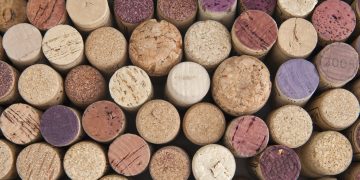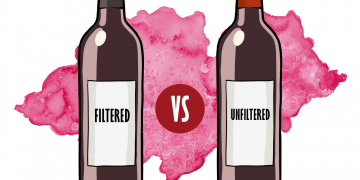Whilst you can drink wine from almost any glass or drinkware that you wish – even a mug if needs must! However, there are certain wine glasses that are better for certain wines (and there is...
Read moreDetailsThe Enigmatic Elegance of Tannins
Wine is a captivating elixir that has been cherished for centuries, offering a spectrum of flavors and aromas that tantalize the senses. While the grape variety, winemaking process, and aging techniques all contribute to the complexity of wine, one element often steals the spotlight: tannins. Tannins are a class of compounds found in wine that play a pivotal role in shaping its taste, texture, and aging potential. In this article, we will delve into the fascinating world of tannins in wine, uncovering their sources, effects, and significance in the realm of oenology.
Understanding Tannins
Tannins are naturally occurring polyphenolic compounds found in grape skins, seeds, and stems. When grapes are crushed during winemaking, these compounds are released into the juice, where they interact with other elements to form the foundation of a wine’s structure. Tannins are also present in oak barrels, where they can be absorbed by the wine, further influencing its flavour profile.
The Role of Tannins
- Texture and Mouthfeel:
Tannins are notorious for their astringency, which is that dry, puckering sensation you feel when sipping certain wines, particularly reds. This astringency is caused by tannins binding to the proteins in saliva and causing them to precipitate. Tannins contribute to the wine’s body, creating a tactile sensation on the palate. They give structure and grip to the wine, making it feel full-bodied and robust. - Aging Potential:
Tannins are key players in a wine’s aging potential. Over time, they polymerize and soften, allowing the wine to evolve and develop complexity. This aging process is why some wines can be cellared for decades, with tannins gradually mellowing and integrating into the wine’s overall profile. - Flavour:
Tannins can impart a range of flavors to wine, including a subtle bitterness and astringency, but also a pleasant texture and complexity. Additionally, tannins can influence the perception of other flavours, enhancing the wine’s overall taste. In some cases, they may even contribute to a wine’s aging bouquet, adding notes of tobacco, leather, or cedar.
Sources of Tannins
- Grape Variety:
Different grape varieties contain varying levels of tannins. For example, Cabernet Sauvignon and Nebbiolo grapes are known for their high tannin content, resulting in wines that are often bold and structured. In contrast, grapes like Pinot Noir tend to have lower tannins, yielding wines with a softer mouthfeel. - Winemaking Techniques:
The winemaking process can also influence tannin levels. Extended maceration, where the grape skins are left in contact with the juice for an extended period, can extract more tannins from the grape skins. Barrel aging in oak can also introduce oak tannins to the wine, contributing to its overall tannin profile.
Tannins in wine are like the building blocks of structure and character, playing a fundamental role in a wine’s texture, aging potential, and flavor profile. Whether you prefer a silky, low-tannin Pinot Noir or a robust, tannin-rich Cabernet Sauvignon, understanding the role of tannins in wine can enhance your appreciation of this ancient beverage.
Next time you savor a glass of wine, take a moment to appreciate the enigmatic elegance of tannins. They are the invisible artists behind the canvas of flavours, adding depth and complexity to every sip. As you explore the world of wine, let tannins be your guide to discovering the myriad expressions of this captivating beverage.










